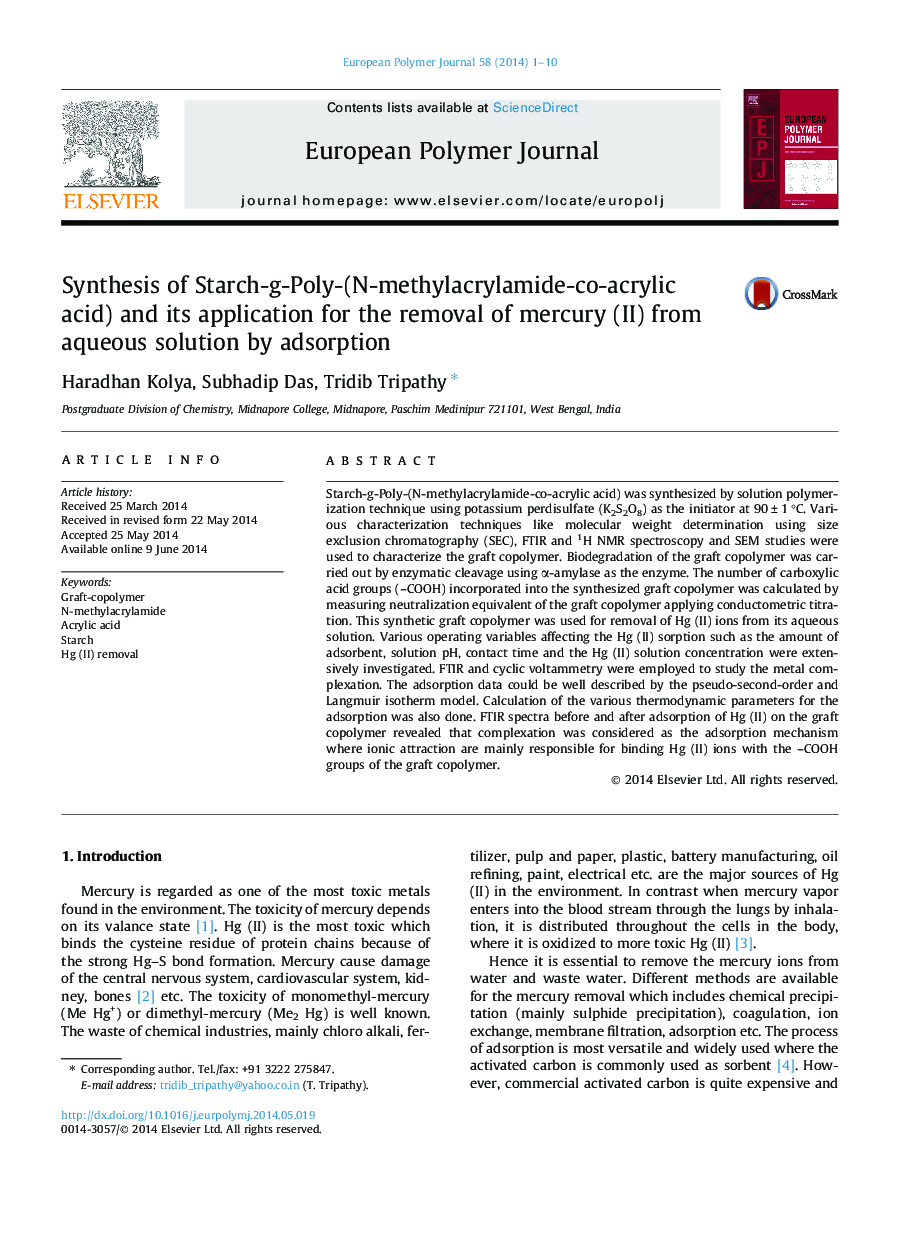| کد مقاله | کد نشریه | سال انتشار | مقاله انگلیسی | نسخه تمام متن |
|---|---|---|---|---|
| 1399341 | 1501377 | 2014 | 10 صفحه PDF | دانلود رایگان |

• Synthesis of Starch-g-Poly-(N-dimethyacrylamide-co-acrylic acid).
• Biodegradation.
• Hg (II) removal.
• Adsorption mechanism.
• Ionic interaction of Hg (II) and –COOH groups.
Starch-g-Poly-(N-methylacrylamide-co-acrylic acid) was synthesized by solution polymerization technique using potassium perdisulfate (K2S2O8) as the initiator at 90 ± 1 °C. Various characterization techniques like molecular weight determination using size exclusion chromatography (SEC), FTIR and 1H NMR spectroscopy and SEM studies were used to characterize the graft copolymer. Biodegradation of the graft copolymer was carried out by enzymatic cleavage using α-amylase as the enzyme. The number of carboxylic acid groups (–COOH) incorporated into the synthesized graft copolymer was calculated by measuring neutralization equivalent of the graft copolymer applying conductometric titration. This synthetic graft copolymer was used for removal of Hg (II) ions from its aqueous solution. Various operating variables affecting the Hg (II) sorption such as the amount of adsorbent, solution pH, contact time and the Hg (II) solution concentration were extensively investigated. FTIR and cyclic voltammetry were employed to study the metal complexation. The adsorption data could be well described by the pseudo-second-order and Langmuir isotherm model. Calculation of the various thermodynamic parameters for the adsorption was also done. FTIR spectra before and after adsorption of Hg (II) on the graft copolymer revealed that complexation was considered as the adsorption mechanism where ionic attraction are mainly responsible for binding Hg (II) ions with the –COOH groups of the graft copolymer.
Figure optionsDownload as PowerPoint slide
Journal: European Polymer Journal - Volume 58, September 2014, Pages 1–10